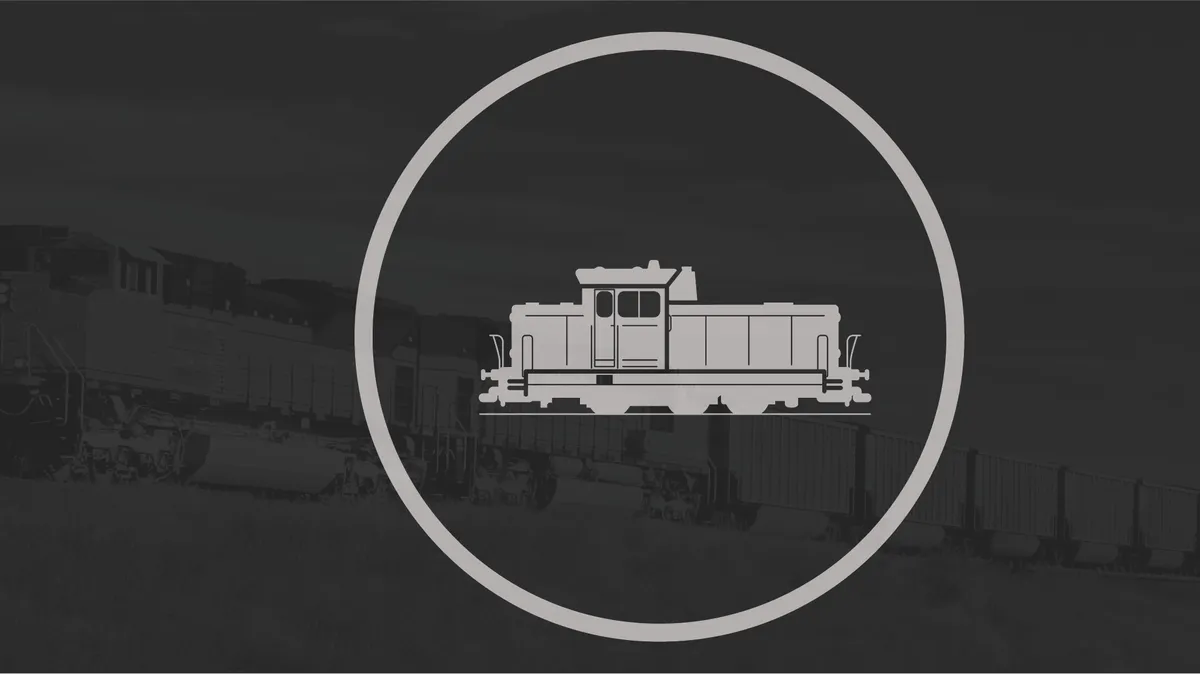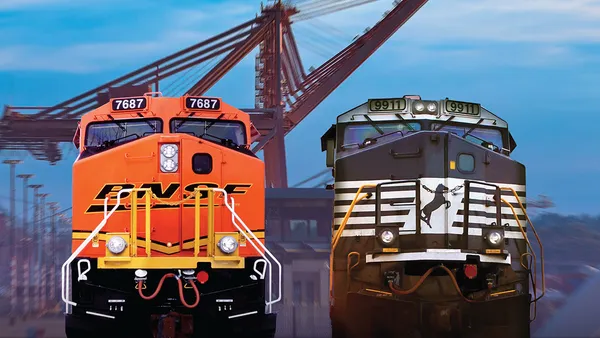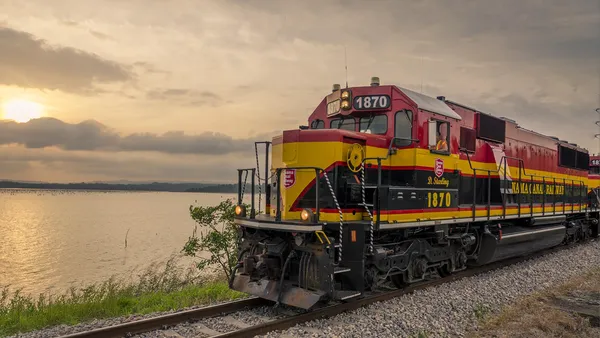Dive Brief:
- Rail traffic was down for intermodal and carload volume in August compared to the same time last year, according to numbers from the Association of American Railroads.
- U.S. railroads originated 1,055,386 carloads in August and 1,089,849 intermodal containers, which are down 4.6% and 5.4% respectively from the same period of time in 2018.
- "Total U.S. freight carloads have fallen on a year-over-year basis for seven straight months, and that’s true even after excluding coal and grain, the major rail commodities least sensitive to overall economic health," AAR Senior Vice President John T. Gray said in a statement.
Dive Insight:
Last month, Gray said intermodal traffic relied on overseas business and "trade policy uncertainty continues to drag down this traffic segment."
Individual railroads are starting to feel the pinch of these volume declines and continued uncertainty. Earlier this month, Union Pacific (UP) lowered its volume guidance. Union Pacific CFO Robert Knight said earlier this month it was expecting the "second half of 2019 to be down mid-single digits as compared to the second half of 2018," according to a Securities and Exchange Commission filing from earlier this month.
UP had originally expected its second-half volume to be down 2% compared to 2019, according to the Associated Press.
As volumes decline, some have suggested railroads will turn to intermodal to look for volume gains. Several railroads have seen growth in this area over the last year, according to numbers from the Surface Transportation Board. But in its most recent quarterly earnings call UP Executive VP of Marketing and Sales Kenny Rocker said the short-term outlook for intermodal doesn't show signs of growth.
"Domestic intermodal volume is expected to be impacted by truck competition in the second half of 2019, which may limit opportunities for over-the-road truck conversions, but longer-term fundamentals still provide a bullish outlook for over-the-road conversions," Rocker said.
But not every Class I has this outlook. The latest guidance from Norfolk Southern CEO Jim Squires indicated the rail line expects revenue and volume growth in 2019, saying intermodal gains would be partially to thank, according to comments on a July call with investors.
A significant amount of the volume moving over railroads comes from manufacturing and trading, Gray said, and both of these areas have shown signs of strain. The Institute for Supply Management's (ISM) manufacturing index fell below 50% in August, which indicates a contraction in the manufacturing sector. The current trade war with China has impacted agricultural exports, which move in large numbers over the nation's railways.















